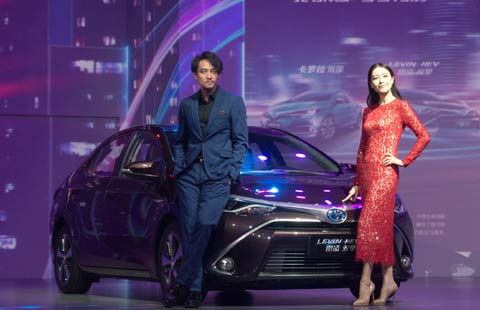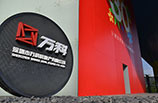The 'catfish' in the market
By John Zeng (China Daily) Updated: 2015-04-20 13:47Low-cost EVs
However, in the final quarter of 2014, registrations of EVs soared to an unprecedented 23,811 units-a level almost equal to the total number sold over the last two years. So, what prompted this mysterious and sudden spurt of popularity?
The stars of the show have undoubtedly been Geely and Zotye's low-cost EVs. The combined sales of the Zhidou and the Yun 100 by Zotye and the Kandi by Geely came close to 15,000 units in the fourth quarter of 2014, accounting for over 61 percent of the overall market. As their prices are below 60,000 yuan with subsidies taken into account, the vehicles were eminently more affordable than any comparable models on the market.
Both Geely and Zotye tapped into the low-cost EV market by establishing joint ventures with Kandi and Xindayang respectively.
Despite Geely's cooperation with Volvo in the development of medium to high-end models, the company's founder Li Shufu remains convinced that low-speed electric vehicles offer a more practical solution for China, asserting that "lowspeed EVs have many advantages. They are suitable for short driving ranges... This type of vehicles can be very small and lightweight, incorporating a smaller battery, which has a reduced battery pack capacity that saves more energy."
Li's vision evolved into a plan of action and, in the process of launching low-cost EVs as part of its joint venture with Kandi, Geely took 37 percent of market share in the closing quarter of 2014
Sharing and rental
Low-cost EVs, priced to appeal to the mass market, effectively broke through the first barrier that stood in the way of market expansion. Inevitably, the question arose as to how to deal with the remaining two obstacles. The answer was to be found in the car sharing and car rental business models.
Together, Geely and Kandi initiated the Green Car rental service in Hangzhou, providing hourly electric car rental services through a network of over 48 service sites in the city, simplifying the process of rental and return. Rental fees range from 20 to 25 yuan an hour, depending on the model (from two to four seats), which is not too much more than the standard minimum charge of 11 yuan for a taxi. An annual rental service is also available to local residents.
The scheme, dubbed "mini public transport", has essentially made EVs affordable to the mass market, while resolving the charging quandary through its "park and charge" sites.
By the end of last year, close to 10,000 Geely/Kandi electric cars were on the road in Hangzhou. And with other cities such as Chengdu joining the Green Car service operated by Geely and Kandi, a viable solution emerged for the EV market and the remaining barriers were breached in the process.
Looking ahead, as the scheme expands, consumers will benefit from increased opportunities to test-drive EVs before committing to a purchase, while the advantages afforded by such vehicles, such as low running costs and convenient charging through the network of sites, will become increasingly apparent to consumers.
A key point to note is that before Geely took over production, the Kandi as well as the Zhidou by Zotye were classified as "low-speed electric cars". This vehicle type cannot be legally registered since it has no government recognition.
Produced by private manufacturers without an official license, the standard price for such vehicles is usually about 30,000 yuan. In spite of these restrictions and against all the odds, the market flourished to the extent that annual sales of low-speed electric cars exceeded 360,000 units in 2014, rising from a mere 20,000 in 2009. A surge to 1 million units a year by 2020 is well within the realms of possibility.
Low-cost EVs such as Kandi and Zhidou were derived from lowspeed electric cars, and they've played the "catfish" role in the market. Based solely on their market acceptance, a move to regulate the market and put in place technical standards should surely be a priority for the government. After all, the new-energy vehicle industry can only sustain itself and thrive through technological advancements and increased affordability.
- Slower, but still top gear
- Automotive industry's profits take a tumble
- Detailed plans for four PFTZs announced
- Yidao set to promote green travelling with Prius
- Foreign automakers double down on China bets despite slowing growth
- Guangqi Honda releases new cars and to localize Acura
- Tianjin's foreign investment hits $6.3b in 2014
- Global media's take on reserve ratio cut

















